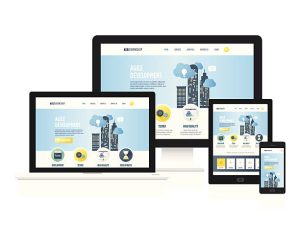
Introduction:
Web development has undergone a remarkable evolution since the early days of the internet. In this article, we will explore the journey of web development from the basic building blocks of HTML to the emergence of powerful frameworks that simplify the development process and enhance user experiences. If you’re interested in becoming a part of this exciting field, keep reading and discover how you can enroll in our tech company’s training program to kickstart your career in web development.
I. The Era of HTML and Static Websites:
In the early days of the web, websites were primarily built using HyperText Markup Language (HTML). HTML provided a structured way to define the content and structure of web pages. However, these static websites consisted of fixed content that didn’t change based on user interactions or data inputs. While HTML served as the foundation for the web, it lacked dynamic functionality and interactivity.
II. Dynamic Web Development with JavaScript:
To meet the growing demand for more interactive websites, JavaScript emerged as a game-changer in web development. JavaScript allowed developers to add dynamic elements and interactivity to web pages. It enabled client-side scripting, making it possible to perform calculations, validate forms, and create interactive effects. JavaScript paved the way for a more engaging and user-friendly web experience.
III. The Rise of Backend Technologies:
Alongside JavaScript’s advancements on the front end, backend technologies played a vital role in web development. Technologies like PHP, Python, and Ruby on Rails provided server-side scripting capabilities, enabling developers to handle data processing, database interactions, and server-side logic. This allowed for the development of more complex and data-driven web applications.
IV. Introduction of CSS and Styling Enhancements:
Cascading Style Sheets (CSS) emerged as a standard for defining the visual presentation of web pages. CSS separated the content from the design, allowing developers to create consistent and visually appealing websites. Over time, CSS evolved, offering more advanced styling capabilities, such as animations, transitions, and responsive layouts. This gave rise to more immersive and visually impressive web experiences.
V. Emergence of Web Development Frameworks:
As web applications became more sophisticated, the need for efficient and scalable development approaches became apparent. This led to the rise of web development frameworks, which provided pre-built components, libraries, and tools to streamline the development process. Frameworks like Ruby on Rails, Django, and Laravel emerged, offering MVC (Model-View-Controller) architectures, database abstractions, and other features that simplified development and improved productivity.
VI. Modern Frontend Frameworks:
In recent years, frontend frameworks like Angular, React, and Vue.js have gained immense popularity. These frameworks introduced component-based architectures, allowing developers to build reusable UI components and create complex user interfaces with ease. They leveraged JavaScript libraries and introduced concepts like virtual DOM (Document Object Model) for efficient rendering, state management for handling complex application states, and routing for managing different application views.
VII. Full-Stack JavaScript with Node.js:
Node.js, a JavaScript runtime built on Chrome’s V8 engine, brought JavaScript to the server-side. With Node.js, developers could build full-stack applications using a single programming language. This unified JavaScript ecosystem allowed for seamless communication between the frontend and backend, resulting in improved efficiency and faster development cycles.
Conclusion:
The evolution of web development has transformed the way we interact with the internet. Modern frameworks and technologies have empowered developers to create robust, scalable, and visually appealing web experiences. If you’re passionate about web development and want to embark on a career in this field, enroll in our tech company’s training program. Stay updated with the latest frameworks and tools, embrace the ever-changing landscape of the web, and deliver cutting-edge solutions to meet user expectations. Join us today and become a part of the exciting world of web development.

